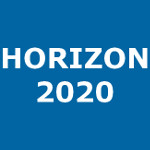Biopsychosocial response to the COVID-19 lockdown in people with major depressive disorder and multiple sclerosis
Siddi, Sara ; Giné Vázquez, Iago ; Bailon, Raquel (Universidad de Zaragoza) ; Matcham, Faith ; Lamers, Femke ; Kontaxis, Spyridon (Universidad de Zaragoza) ; Laporta, Estela ; Garcia, Esther ; Arranz, Belen ; Dalla Costa, Gloria ; Guerrero, Ana Isabel ; Zabalza, Ana ; Buron, Mathias Due ; Comi, Giancarlo ; Leocani, Letizia ; Annas, Peter ; Hotopf, Matthew ; Penninx, Brenda W. J. H. ; Magyari, Melinda ; Sørensen, Per S. ; Montalban, Xavier ; Lavelle, Grace ; Ivan, Alina ; Oetzmann, Carolin ; White, Katie M. ; Difrancesco, Sonia ; Locatelli, Patrick ; Mohr, David C. ; Aguiló, Jordi ; Narayan, Vaibhav ; Folarin, Amos ; Dobson, Richard J. B. ; Dineley, Judith ; Leightley, Daniel ; Cummins, Nicholas ; Vairavan, Srinivasan ; Ranjan, Yathart ; Rashid, Zulqarnain ; Rintala, Aki ; Girolamo, Giovanni De ; Preti, Antonio ; Simblett, Sara ; Wykes, Til ; Myin-Germeys, Inez ; Haro, Josep Maria ;
Resumen: Background: Changes in lifestyle, finances and work status during COVID-19 lockdowns may have led to biopsychosocial changes in people with pre-existing vulnerabilities such as Major Depressive Disorders (MDDs) and Multiple Sclerosis (MS). Methods: Data were collected as a part of the RADAR-CNS (Remote Assessment of Disease and Relapse—Central Nervous System) program. We analyzed the following data from long-term participants in a decentralized multinational study: symptoms of depression, heart rate (HR) during the day and night; social activity; sedentary state, steps and physical activity of varying intensity. Linear mixed-effects regression analyses with repeated measures were fitted to assess the changes among three time periods (pre, during and post-lockdown) across the groups, adjusting for depression severity before the pandemic and gender. Results: Participants with MDDs (N = 255) and MS (N = 214) were included in the analyses. Overall, depressive symptoms remained stable across the three periods in both groups. A lower mean HR and HR variation were observed between pre and during lockdown during the day for MDDs and during the night for MS. HR variation during rest periods also decreased between pre- and post-lockdown in both clinical conditions. We observed a reduction in physical activity for MDDs and MS upon the introduction of lockdowns. The group with MDDs exhibited a net increase in social interaction via social network apps over the three periods. Conclusions: Behavioral responses to the lockdown measured by social activity, physical activity and HR may reflect changes in stress in people with MDDs and MS. Remote technology monitoring might promptly activate an early warning of physical and social alterations in these stressful situations. Future studies must explore how stress does or does not impact depression severity.
Idioma: Inglés
DOI: 10.3390/jcm11237163
Año: 2022
Publicado en: Journal of Clinical Medicine 11, 23 (2022), 7163 [20 pp.]
ISSN: 2077-0383
Factor impacto JCR: 3.9 (2022)
Categ. JCR: MEDICINE, GENERAL & INTERNAL rank: 58 / 169 = 0.343 (2022) - Q2 - T2
Factor impacto CITESCORE: 5.4 - Medicine (Q2)
Factor impacto SCIMAGO: 0.935 - Medicine (miscellaneous) (Q1)
Financiación: info:eu-repo/grantAgreement/EUR/H2020/Innovative Medicines Initiative 2 (IMI2)
Financiación: info:eu-repo/grantAgreement/EC/H2020/115902/EU/Remote Assessment of Disease and Relapse in Central Nervous System Disorders/RADAR-CNS
Tipo y forma: Article (Published version)
Área (Departamento): Área Teoría Señal y Comunicac. (Dpto. Ingeniería Electrón.Com.)
 You must give appropriate credit, provide a link to the license, and indicate if changes were made. You may do so in any reasonable manner, but not in any way that suggests the licensor endorses you or your use.
You must give appropriate credit, provide a link to the license, and indicate if changes were made. You may do so in any reasonable manner, but not in any way that suggests the licensor endorses you or your use.
Exportado de SIDERAL (2024-03-18-14:16:29)
Visitas y descargas
Idioma: Inglés
DOI: 10.3390/jcm11237163
Año: 2022
Publicado en: Journal of Clinical Medicine 11, 23 (2022), 7163 [20 pp.]
ISSN: 2077-0383
Factor impacto JCR: 3.9 (2022)
Categ. JCR: MEDICINE, GENERAL & INTERNAL rank: 58 / 169 = 0.343 (2022) - Q2 - T2
Factor impacto CITESCORE: 5.4 - Medicine (Q2)
Factor impacto SCIMAGO: 0.935 - Medicine (miscellaneous) (Q1)
Financiación: info:eu-repo/grantAgreement/EUR/H2020/Innovative Medicines Initiative 2 (IMI2)
Financiación: info:eu-repo/grantAgreement/EC/H2020/115902/EU/Remote Assessment of Disease and Relapse in Central Nervous System Disorders/RADAR-CNS
Tipo y forma: Article (Published version)
Área (Departamento): Área Teoría Señal y Comunicac. (Dpto. Ingeniería Electrón.Com.)
Exportado de SIDERAL (2024-03-18-14:16:29)
Permalink:
Visitas y descargas
Este artículo se encuentra en las siguientes colecciones:
Articles > Artículos por área > Teoría de la Señal y Comunicaciones
Record created 2022-12-13, last modified 2024-03-19
